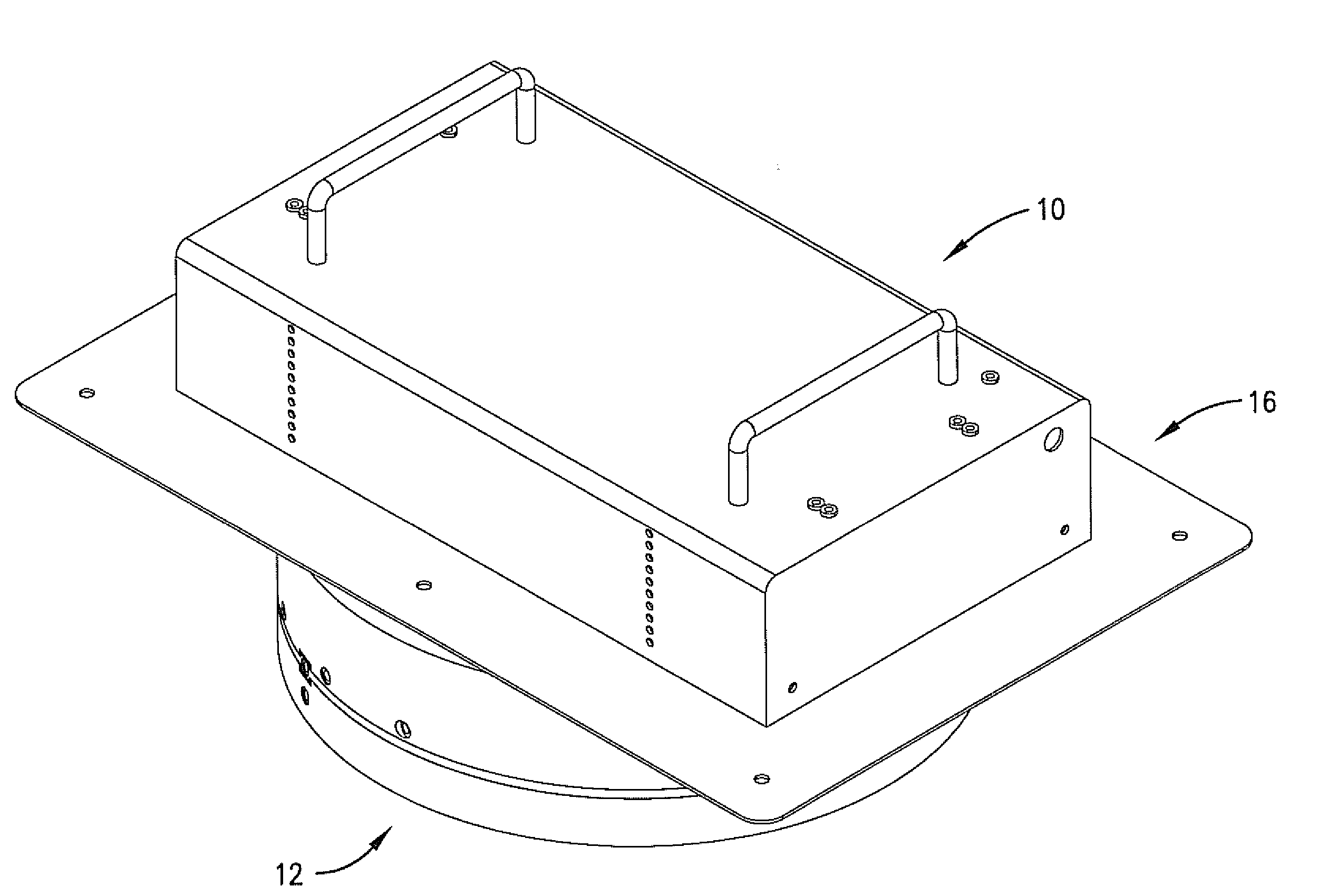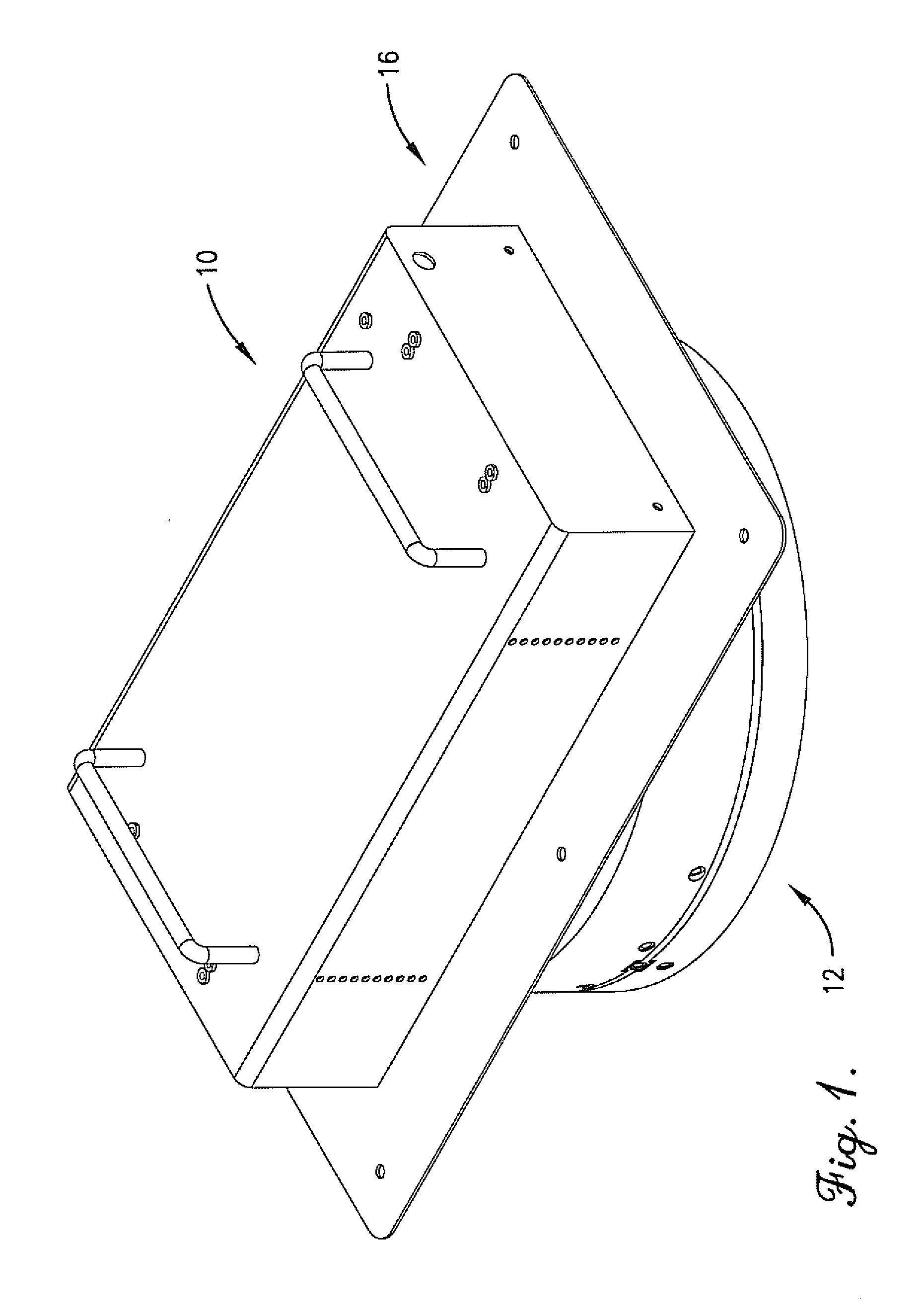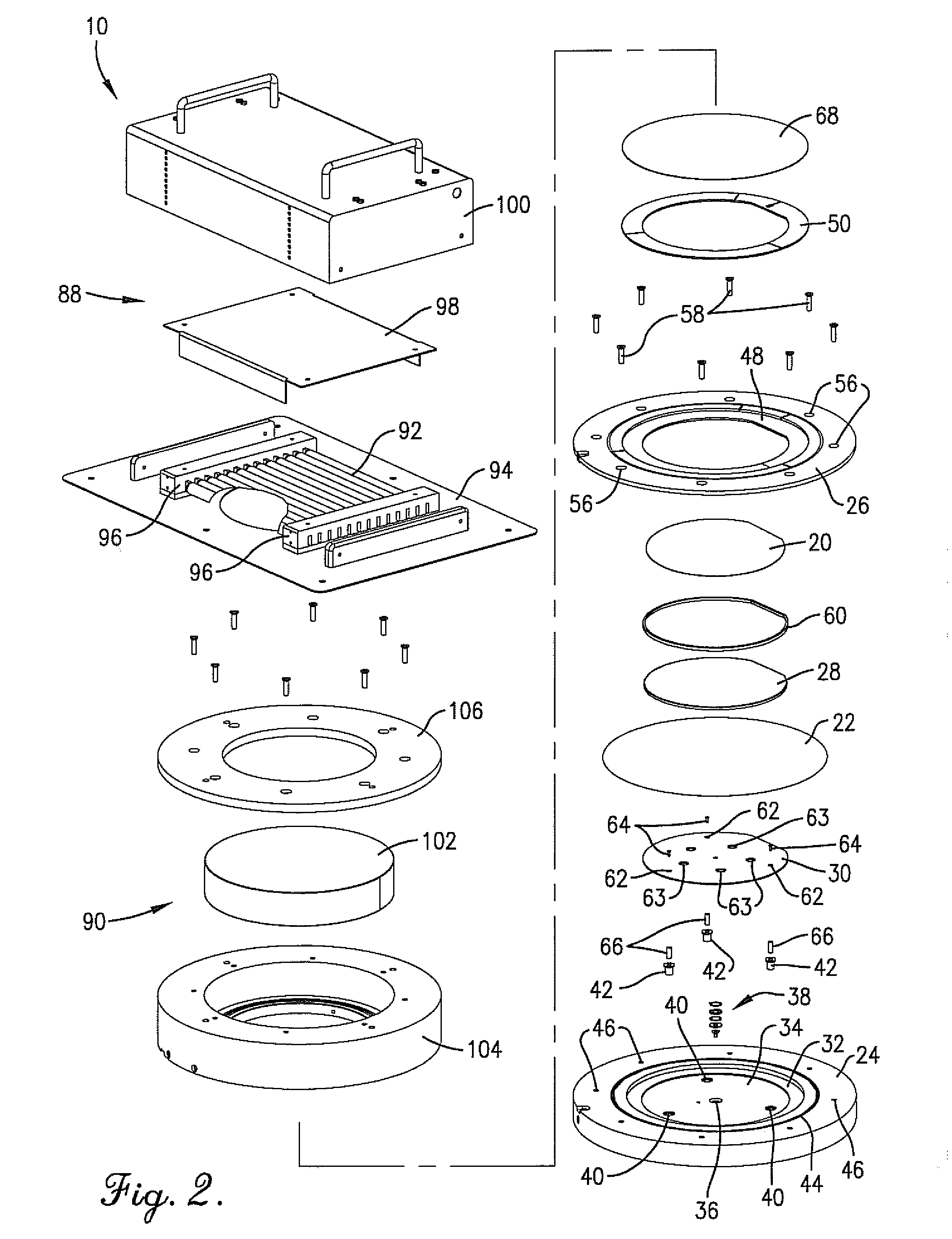Contact planarization apparatus
a technology of contact and apparatus, which is applied in the direction of photomechanical equipment, grinding drives, instruments, etc., can solve the problems of reducing the final yield and performance of ic devices, non-planar surfaces becoming unsuitable for constructing the next structural layer, and reducing the efficiency of ic devices, so as to achieve precise control of the planarization process, reduce the effect of thermal mass, and effectively sweep out and eliminate entrapped air bubbles
- Summary
- Abstract
- Description
- Claims
- Application Information
AI Technical Summary
Benefits of technology
Problems solved by technology
Method used
Image
Examples
Embodiment Construction
[0036]The following detailed description of the invention references the accompanying drawings that illustrate specific embodiments in which the invention can be practiced. The embodiments are intended to describe aspects of the invention in sufficient detail to enable those skilled in the art to practice the invention. Other embodiments can be utilized and changes can be made without departing from the scope of the present invention. The following detailed description is, therefore, not to be taken in a limiting sense. The scope of the present invention is defined only by the appended claims, along with the full scope of equivalents to which such claims are entitled.
[0037]Turning now to the drawing figures, a planarization apparatus 10 constructed in accordance with a preferred embodiment of the invention is illustrated. The apparatus 10 is designed to efficiently contact planarize coatings applied to individual substrates, such as microelectronic, optoelectronics, photonic, optica...
PUM
| Property | Measurement | Unit |
|---|---|---|
| pressure | aaaaa | aaaaa |
| pressure | aaaaa | aaaaa |
| pressure | aaaaa | aaaaa |
Abstract
Description
Claims
Application Information
 Login to View More
Login to View More - R&D
- Intellectual Property
- Life Sciences
- Materials
- Tech Scout
- Unparalleled Data Quality
- Higher Quality Content
- 60% Fewer Hallucinations
Browse by: Latest US Patents, China's latest patents, Technical Efficacy Thesaurus, Application Domain, Technology Topic, Popular Technical Reports.
© 2025 PatSnap. All rights reserved.Legal|Privacy policy|Modern Slavery Act Transparency Statement|Sitemap|About US| Contact US: help@patsnap.com



